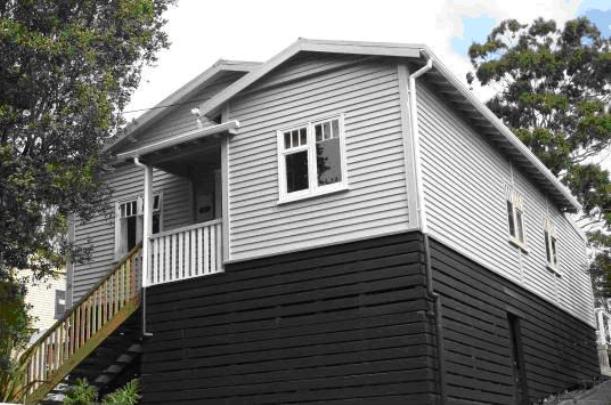


Location
List Entry Information
Overview
Detailed List Entry
Status
Listed
List Entry Status
Historic Place Category 2
Access
Private/No Public Access
List Number
7745
Date Entered
14th May 2008
Date of Effect
14th May 2008
City/District Council
Whangārei District
Region
Northland Region
Extent of List Entry
Registration includes all the land described as Lot 17 DP 135362 (RT NA79D/560) North Auckland Land District and the house thereon.
Legal description
Lot 17 DP 135362 (RT NA79D/560), North Auckland Land District
Status
Listed
List Entry Status
Historic Place Category 2
Access
Private/No Public Access
List Number
7745
Date Entered
14th May 2008
Date of Effect
14th May 2008
City/District Council
Whangārei District
Region
Northland Region
Extent of List Entry
Registration includes all the land described as Lot 17 DP 135362 (RT NA79D/560) North Auckland Land District and the house thereon.
Legal description
Lot 17 DP 135362 (RT NA79D/560), North Auckland Land District
Cultural Significance
SOCIAL SIGNIFICANCE OR VALUE: The railway settlements contributed to the 'community' ethos of railway workers and their families. Working for the Railways was secure employment during times of economic hardship, and men considered themselves fortunate to have homes provided by their employer at cheap, non-fluctuating rents. There was enough land to put in a vegetable garden, run hens and graze a milk cow. Rarely was an ornamental garden planted as the residents were always aware that they would be moved on. With the regularity of transfers, the advantages of identical houses spread throughout the country was welcomed and the transition was easy as the family moved into a similar community as the one they had left. The settlements were close-knit communities whose whole life revolved around the Railways. The men worked for the Department, the focus of their social life was the railway hall where regular Saturday night dances were held, and most shared the transient lifestyle. Friendships made in other communities were maintained by frequent visits by train at little charge. These settlements were close to general amenities as a small town nucleus grew up around the railway station. Hundreds of children grew up in these homes which in their uniformity and consistency provided familiar surroundings for the families as they were moved around the country. When the worker was re-assigned to another centre the families followed, and the transition into the new community was made easier by the identical housing and environment.
Historic Significance
Historical Significance or Value This house is significant as one example of the houses built under the Railway Housing Scheme, which was the first and largest government programme to provide housing for state workers. It brought uniformity and rationalization to the housing of railway workers in New Zealand. Ten main settlements were created, of which Whangarei was one of the smaller ones. It is significant as a representative link in the chain of this nation-wide scheme to provide simple sanitary and economical housing for the lower paid work force. It is also considered historically significant for its association with the development of New Zealand's railway network, particularly its extension to major provincial centres. Railway development was closely linked with Whangarei's development as a major economic centre in Northland, which was facilitated by improved communications with the rest of New Zealand.
Physical Significance
ARCHITECTURAL SIGNIFICANCE OR VALUE: Railway houses are a significant element in the history of New Zealand architecture, yet surprisingly few have been registered by NZHPT. No 6 Railway Terrace is a significant example in that it was built in the later period of railway house construction, after the closure of the Frankton factory, and is of the larger more elaborate 'American' design, built for more senior staff, in contrast to the simpler and more common 'English' design. Although George Troup had left the Railways before it was built in 1938, this house was built by a Whangarei builder George Henry Bartlett to Troup's design and shows the continuity in the building of these houses from his original design work. No 6 Railway Terrace also illustrates several of the 'variations on a theme' that the kitset construction method allowed, having roof pitch Type B, being built to the mirror image of the plans, and having a two light window in the front bedroom.
Detail Of Assessed Criteria
Section 23 (2) Assessment: (a) The extent to which the place reflects important or representative aspects of New Zealand history: The New Zealand railway house, of which this is a well preserved example, is indicative of a form and scale of state sector employment which is now obsolete. As part of George Troup's grand scheme the Planned Settlements were intended to be special kinds of early suburbs - garden communities of group housing and social facilities. The garden suburb idea was only partially put into practice in New Zealand. The development of the railway system was an enormously important factor in the social and economic growth of New Zealand, and the provision of housing for workers was an important component of that development. The provision of affordable housing is still an issue today as it was in the years of recovery after World War I. Decent housing is perceived as a foundation of a good society - it provides stability and responsibility. The post war concern with the physical and moral health of the nation led to the Public Health Act of 1918 which gave health inspectors power to authorize demolition and the 1919 Housing Act provided loans for local authorities to borrow to build new workers' housing. In 1925 the State Advances scheme provided 95% of the cost of a house to anyone who could afford it. Workers' suburbs were envisaged as garden mews to provide healthy open living spaces to uplift the moral tenor and provide stability through affordable home ownership. The Railway Housing Scheme was modelled on these principles and was in the forefront of employer-provided housing. Similar housing projects were developed by the Ministry of Works at sites of road building, timber industry and electricity generation. The Annual Report of the Government Architect records that the Public Works Department built houses for Education, Agriculture, Army Air, Navy, Police, and Health but not Railways. It could also be considered the forerunner of the Department of Housing Construction created in 1936 by John A Lee to provide affordable well built housing. Houses were designed for different sized families, to be roomy and pleasant and of a high standard. Each street was to have several different designs at different elevations. Development of community was a primary consideration with the provision of public facilities, shops, schools, recreation and transport. The old grid layout was to be avoided and extensive use of loop roads and cul-de-sacs. The houses were to remain the property of the State and rented for a sum that covered costs and provided a small surplus for replacement sixty years hence. (g) The technical accomplishment or value, or design of the place: The Railway Housing scheme was the first and largest workers' housing scheme ever to have been undertaken in New Zealand. From the milling of the timber in its own forests to the extensive Housing Factory in Frankton and the railing of the pre-cut house 'kits' to the sites - it was the largest enterprise in the country at the time. As such it represents a considerable technical achievement. No 6 Railway Terrace is one of the later houses adapted from plans of the original houses and using the same principles of standardisation. It is estimated that some fifty of this design were built throughout the network. There are five of this type in the Frankton development, protected in the Historic Area by the Hamilton District Plan. . (k) The extent to which the place forms part of a wider historical and cultural complex or historical and cultural landscape: The pre-cut railway house made a strong visual impact on many towns in New Zealand, with uniform houses on uniform plots in a regular pattern like the British terrace house, an image the planners had sought to avoid. Although the 1920 AB 296 railway house is dominant in the places they were built because of their uniformity, despite variations, later houses like No 6 Railway Terrace form part of the community streetscape. The Morningside railway settlement still exists to a substantial degree in Whangarei, but many of its houses have been considerably modified. Number 6 Railway Terrace, and its older neighbour Number 4 that is the subject of a separate registration proposal, have been selected for registration as representative examples of the wider railway settlement of Morningside, and of railway houses nationwide, because they have remained substantially intact in appearance. Both houses should be seen as part of that wider local and national cultural landscape. SUMMARY OF SIGNIFICANCE OR VALUES: This place was assessed against, and found it to qualify under the following criteria: a, g, k. CONCLUSION: In several respects, this house has been demonstrated to have historical and cultural significance, both locally in the history of Whangarei and Northland and nationally as a typical example of a significant national housing scheme. It is considered that this place qualifies as a Category II historic place.
Construction Professional
Biography
G A Troup (1863-1941) was born in London in 1863 and educated in Scotland. He trained as an architect and engineer under C E Calvert of Edinburgh and came to New Zealand in 1884. After a short time with the Survey Department in Otago he became a draughtsman for New Zealand Railways in Dunedin and then, from 1888, in Wellington. Troup became Chief Draughtsman in 1894. He designed many station buildings throughout the county, some of which are still in use today; these buildings form an important part of New Zealand's landscape. His best known building is the Dunedin Railway Station (1904-07). He also designed the head office building in Wellington for Railways (1901, now demolished). Troup became a Fellow of the Royal Institute of British Architects in 1907. After World War I he was promoted to head the newly established Architectural Branch of New Zealand Railways. On retirement from Railways in 1925 he entered local body politics and was Mayor of Wellington from 1927 to 1931. Troup was prominent in the Presbyterian Church and founded the Presbyterian Young Men's Bible Class Union. He was an elder of the church for 47 years and also served on the governing bodies of several Wellington secondary schools. Education was a life-long interest and he was keenly involved in the training of engineering cadets in New Zealand Railways. Troup was knighted in 1937 and died in 1941. Last updated 1 October 2014 See also: James Veitch. 'Troup, George Alexander', Dictionary of New Zealand Biography, first published in 1993. Te Ara - the Encyclopedia of New Zealand, https://teara.govt.nz/en/biographies/2t49/troup-george-alexander
Name
Troup, George Alexander
Type
Architect
Biography
Graham Henry Bartlett (fl. 1900 - 1980) was a Northland builder who worked initially in Dargaville, where he built the Northland Electric Power Board building, and also made concrete power poles. From the mid 1930s he worked in Whangarei. He was a keen musician, playing violin and clarinet in the Whangarei chamber orchestra, and he made violins and other string instruments. In later life he became a Rosicrucian.
Name
Bartlett, Graham Henry
Type
Builder
Construction Details
Description
George Troup appointed Architect to Government Railways Housing Scheme.
Start Year
1919
Type
Other
Description
Railway house factory in Frankton opened
Start Year
1922
Type
Other
Description
Plans developed for railway development in Whangarei
Start Year
1923
Type
Designed
Description
First ten railway houses erected in Whangarei
Finish Year
1925
Start Year
1924
Type
Other
Description
Whangarei Railway Station opened
Start Year
1925
Type
Other
Description
Railway Terrace created as a cul-de-sac off Morningside Drive
Start Year
1928
Type
Other
Description
Railway house factory in Frankton closed
Start Year
1928
Type
Other
Description
Nos 6 and 8 Railway Terrace constructed
Start Year
1938
Type
Original Construction
Description
Railcorp sells No. 6 Railway Terrace to private interests
Start Year
1990
Type
Other
Description
Present owners purchase No. 6 Railway Terrace
Start Year
2003
Type
Other
Construction Materials
Timber, weatherboard, corrugated iron roof.
HISTORICAL DESCRIPTION AND ANALYSIS: THE RAILWAY HOUSING CONCEPT: In New Zealand the Railways Department had provided accommodation for employees from as early as 1885, usually by purchasing existing buildings. Transfers from railway centre to centre were a condition of employment and so cheap housing was an attraction to staying in the service. However, the acute housing shortage after World War I prompted the Department to look for other ways to fill this need. The construction of planned towns to house the workforce of a particular industry was a result of the Industrial Revolution. In Britain from the mid nineteenth century private enterprises including railway companies, built housing in planned settlements for employees. They were usually well built, solid and very plain terrace houses of regular plan. Companies also provided community facilities such as markets, shops, assembly rooms and schools. The philosophy of garden suburbs to provide sanitary, simple and affordable housing had been promoted in Britain and America since the end of the nineteenth century. The concept was that the community would be self contained and provide easy connection between public facilities - parks, halls, churches and the houses - and the work place. In New Zealand railway housing had previously been built along the railway line without consideration to conveniences. In the planned communities houses were located away from noise and smoke yet close enough for the men to walk to work at the railway yards. Often the land was marginal and therefore cheaper, as was the case in Whangarei. Frankton Junction, which by 1928 comprised of 133 houses, and had a hall and library but never really fulfilled the garden suburb ideal. The Architectural Branch of Government Railways Department was created in 1920 to supervise the large scale construction programme. George Troup was appointed architect to the Railway Housing Scheme in 1919. Besides having trained as an architect he also had qualifications in engineering and surveying. Troup undertook study tours to America to observe the concept of garden cities and he became enthusiastic about the contemporary concepts of prefabrication. Emphasis of production was on precutting, standardisation and quantity. He proposed to establish a house factory in Frankton near Hamilton that would be based on contemporary American housing factories. THE RAILWAY HOUSING SCHEME: As the railway network expanded the solution to housing requirements was mass production of standardised cut-to-fit cottages to be railed to and erected in planned settlements. This was made possible by the use of modern specialized technology and efficient use of materials and labour. Emphasis was placed on the speed of production hand in hand with economies achieved by process organization. The Railways Department's Scheme had three purposes:- to set up a modern and mechanized prefabrication factory; to produce architecturally designed, mass produced houses for both urban and rural New Zealand for rental to railway employees; and to provide 'garden suburbs' for railway families complete with recreational and social facilities. It was the first large scale state housing policy in the country. The scheme was to provide single family units of one storey on a plot of land - a concept that was a long standing tradition and an expectation in New Zealand. The houses were based on two styles, one English and the other American in design. The English style house had a standard floor plan with a variety of four roof forms and four different porches and is referred to as AB296. The ordinary worker was assigned an AB296 house while the larger houses such as AB 1123 were for more senior employees, regardless of family size. After the Housing factory closed in 1928 other designs including AB 326 and B class 50974 and 16908 were used. The provision of housing contributed to staff mobility and retention of employees. The standardization of housing had the advantage that when families relocated they moved into a house of exactly the same floor plan and the furniture fitted in the same room and the curtains on the windows. The House Factory in Frankton , the first in the Southern Hemisphere, was designed to eliminate manpower and mechanise the construction industry. It was deemed at the time to be the most complete layout of a prefabrication factory. The automatic factory process was designed to save materials by 18%, labour by 33% and time with a total financial saving of 20%. Rationalisation of production and erection were the key to economising. Elements such as doors and window frames and furniture joinery were standardised. The process was so organised that each piece of cut timber was numbered as recorded in the pattern books for the different types of standard house. Even the separate slats for the trellis work on the front porch were cut to a specified length in the factory. The complete house 'bundles' were sent by rail to the building sites. Construction gangs could erect a standard cut-to-fit cottage in two to three weeks. Ten major railway housing settlements were planned in the North Island; eventually railway houses were erected in 170 locations throughout the country. The annual report of the Railways Department in 1928 recorded: These houses have all the usual modern conveniences, such as electric lighting, hot-and cold water service, sewerage, high-pressure water, etc., where such are available. In the case of the larger settlements attention has been paid to the provision of reasonable reservations for recreation purposes, and the Department has aided tenants of such settlements in providing well-equipped sports-grounds. The Frankton house-factory was closed at the end of 1928 as the housing programme was deemed to have been completed. Since the inauguration of the housing scheme the total number of houses erected is Departmental, 1,277; non-departmental, 314: total 1,591. The Housing Construction Department took over providing housing for NZR employees, contracting out the building work to be undertaken by local builders to standard designs. WHANGAREI RAILWAY HOUSES: Established as a colonial township in the 1860s, Whangarei's earliest railway line was constructed in 1879-80 to allow the export of coal from mines at nearby Kamo via the Whangarei wharf. The Kamo-Whangarei line remained isolated from the rest of New Zealand's rail network until the main trunk route between Auckland and Wellington was completed in 1908, allowing resources to be spent on connecting outlying provincial centres. In 1911 Whangarei was linked to the Kawakawa-Opua line further north, and by 1925 its connection to Auckland was complete. As a major focus for the rail network in the region, a large station complex was erected at Whangarei on a new site to the south of the town centre. The Station was opened by the Minister for Railways and future premier, Gordon Coates (1878-1943), on 11 March 1925. The building of the main trunk line to Whangarei necessitated a large building programme. Plans were drawn up for the new station, workshops and employee housing. Towards the end of 1923 an area of nearly 50 acres in Raumanga No. 1 block was surveyed and Gazetted in March 1924, being 'Taken for sites for dwellings for employees of Govt. Railways Dept.' Bounded by Limeburner's Creek to the east and Raumanga Road (the name was subsequently changed to Morningside Road) to the east, the site was mostly hilly scrub country. Ten houses of the AB 296 pattern were built in this initial phase of the scheme in 1924-25 by Mr N Cooksey . According to George Troup's draft programme, 20 houses of the AB 296 pattern for Whangarei were planned in the 4th group of fifty. The initial ten Whangarei houses (Nos. A328 - A337) were erected on the south side of Morningside Road in 1924-1925, facing north. An article in the Whangarei newspaper in July 1924, entitled ‘Housing the Employees: Village in the Making' praised the site and the views. Ten houses are currently under construction fronting the roadway running by an easy grade from the railway cutting towards the crest of lookout hill... The view from the site of the buildings facing northwards is glorious, and from the elevated position Whangārei and the country towards Kamo and Huanui is a really beautiful sight... In 1928 five more houses of the AB 296 pattern were built in the settlement. Railway Terrace was formed and house numbers 2 and 4 were constructed. One of these, No.. 4 Railway Terrace, is the subject of a separate registration proposal. On Morningside Road numbers 97a, and 95 and 115 were built. With the ten built in 1924, these comprise the fifteen A class houses built in Whangarei. In the late 1930s older housing stock close to the station built before the scheme was demolished or sold. The larger B house pattern was introduced in 1938 and Nos. 6 and 8 Railway Terrace were built that year to the B Class pattern. No. 6 is ‘Type B' elevation, with the ridge of the roof at right angles to the front wall, while No. 8 is ‘Type A', with the ridge parallel with the front wall. During the late 1940s and throughout the 1950s additional B houses were built in Morningside Road and neighbouring streets such as William Jones Drive, Matai Street, Anzac Road, Ormond Road, and Arthur Street. A major survey of the Railways Department's housing stock was undertaken in 1962. In Whangarei the Railways Department had forty houses: 15 of the first A class houses, 21 of the later B class designs and 4 of class M which were bought from private builders. The housing stock was rationalised and houses were sold throughout the country. The Morningside settlement, however, remained intact. In 1988 New Zealand Railways became Railcorp and as a commercially orientated State Owned Enterprise, it had no interest in owning rental housing. Proclamation 5908 was cancelled in February 1990 and the individual houses put up for sale. 6 RAILWAY TERRACE: A tender for the construction of two houses was let on 12 December 1938 to Whangarei builder G.H. Bartlett for £2,209/10/0. They were completed on 12 May 1939. Both were built to House Plan 50974. No. 6 is built to Elevation Type B and No. 8 to Elevation type A. Relevant drawings: Joinery 50551, roof 50553, fence 50555, 50980, 50974, 50975, 50976. The houses are listed as B72 and B73 in the Railways Department records. 6 Railway Terrace was sold by Railcorp, along with many others, to Horseback Holdings Ltd and Stone Key Trading Ltd. in June 1990. It was sold to the present owners in November 2003.
ARCHITECTURE: After the close of the Frankton Housing Factory, responsibility for railway house construction passed to the Housing Construction Department. The design of the railway dwellings was much influenced by the new State houses. The railway house designs of the Housing Factory era were amended. The B design Plan 50974 was introduced in the late 1930s. It had six rooms, which were larger than the AB 296 and designed for a more senior class of worker. The earlier scullery was expanded to become a 'kitchenette' with built-in match-lined cupboards, kauri sink bench and stove. The previous kitchen became a family 'living room' with an open fireplace. Electric lights and one plug for the electric iron were installed. Ceilings and walls were dwanged and lined with fibre board. Windows of two or three casements often with top fanlights allowed more light into the interior. Front doors were glazed. This design followed the American bungalow style with the hall reduced and the rooms in the rear leading off each other. The larger main bedroom protrudes in the front. There were two different roof orientations in the design. No 6 Railway Terrace is design B with the roof ridge at right angles to the road, in design A the ridge of the roof is parallel to the road. No 6 Railway terrace was constructed as a 'mirror image' of the drawing shown in the plans - such variations were a normal way of varying the appearance of the houses. The standard of facilities improved. A separate toilet was incorporated with the main house, and access to it and the laundry was off the back porch. The houses were sound and well maintained. Travelling Railways painters and paperhangers, visited at regular five to seven year intervals. The initial exterior colour scheme was cream with brown facings, but later, the policy was to paint the houses in varying colours as in the private sector. 6 Railway Terrace retains its original front and side facades. All the windows are original. The windows have three top lights; in the double windows one opening casement and the other fixed pane with the three light fanlight. In the case of the three-pane window in the dining room the middle one is a fanlight and the side casements open in opposite directions. In the rear, the double window has been replaced with French doors detailed to match the windows. The rear door has been replaced by one of these windows. The front door is original, though the original clear glass has been replaced with opaque glass for privacy. The interior has been altered for modern living but much of the original kauri match-lining and floors remain, as well as the chimneys.
Completion Date
2nd February 2008
Report Written By
Stuart Park
Information Sources
Archives New Zealand (Auck)
Archives New Zealand (Auckland)
Ferguson, 1994
Gael Ferguson, Building the New Zealand Dream, Palmerston North, 1994
Firth, 1949
Cedric Firth, State Housing in New Zealand Ministry of Works 1949.
Kellaway, 1988
Laura Kellaway, Frankton Junction & the Railway House B.Arch. Thesis, University of Auckland 1988
Kellaway, 1994
Laura Kellaway, The Railway House in New Zealand - a Study of the 1920s New Zealand Railway Housing Scheme. M.Arch. Thesis, University of Auckland 1994
Roche, 2006
Michael Roche 'Garden Suburbs and New Zealand Railways 1922-1929' in Planning History, September 2006. pp12-16.
Urlich, 1981
Robyn Urlich, The Railway House in Context. B.Arch. Thesis, University of Auckland 1981
Report Written By
A fully referenced registration report is available from the NZHPT Northland Area Office. Associated NZHPT Registrations: There are surprisingly few railway houses on the Register of NZHPT, given the significance of this housing scheme locally and nationally. There are no other registered railway houses in Northland, though the neighbouring house No. 4 Railway Terrace is being proposed for registration. A related Northland registration is the former Whangarei Railway Station 7646 Category II Please note that entry on the New Zealand Heritage List/Rarangi Korero identifies only the heritage values of the property concerned, and should not be construed as advice on the state of the property, or as a comment of its soundness or safety, including in regard to earthquake risk, safety in the event of fire, or insanitary conditions.
Current Usages
Uses: Accommodation
Specific Usage: House
Former Usages
Themes
Web Links
Related listings
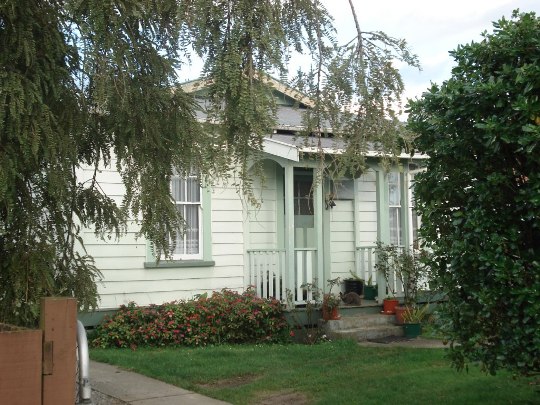
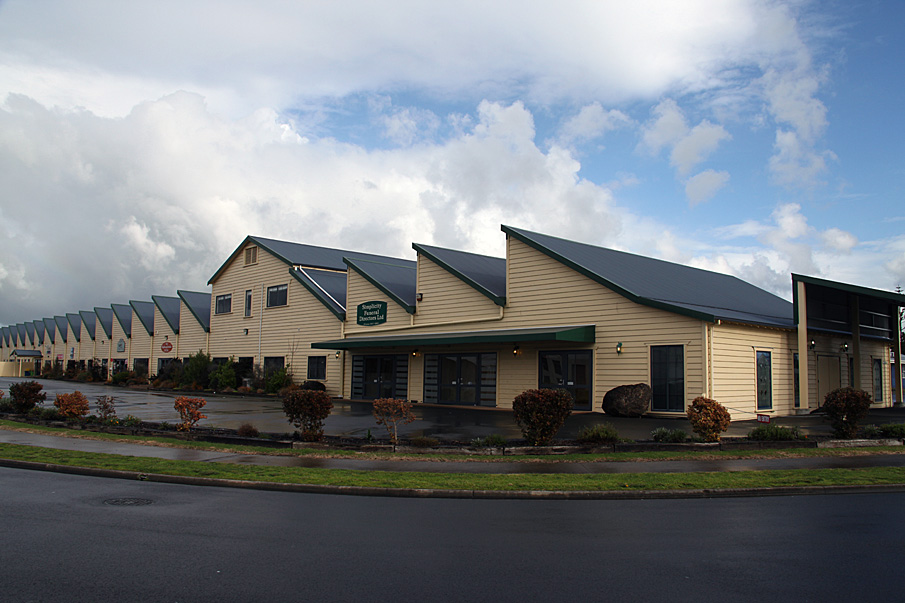
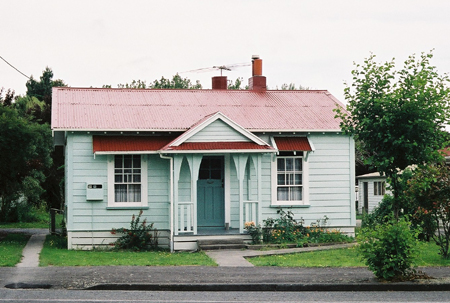
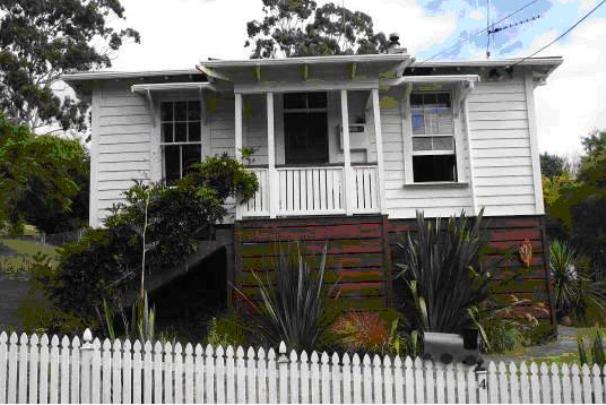

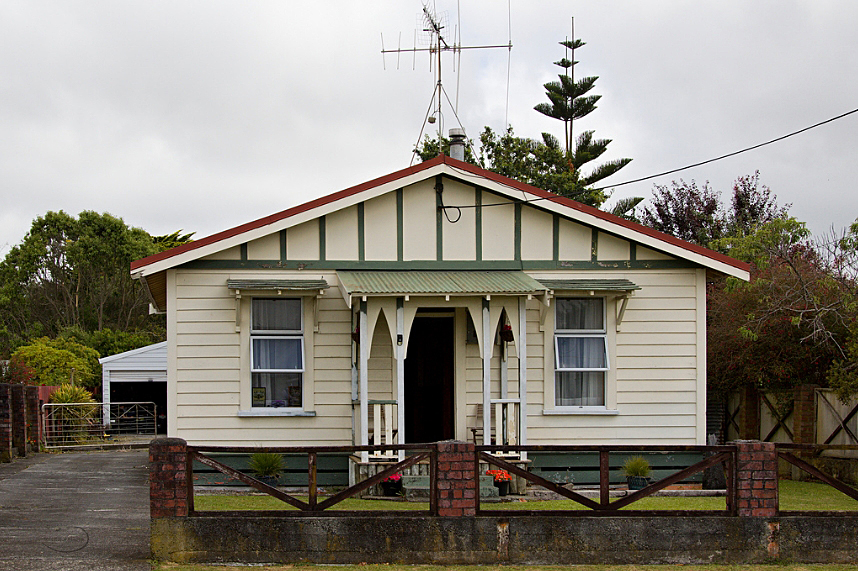

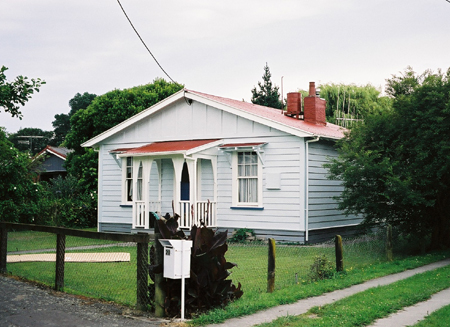


Stay up to date with Heritage this month

